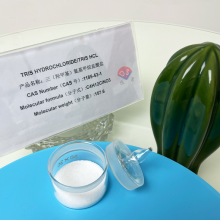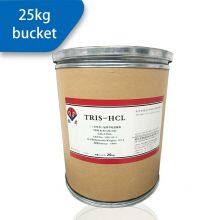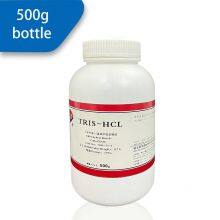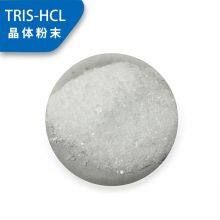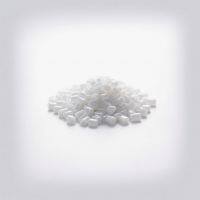Tris hydrochloride, abbreviated as Tris HCl, is a buffering agent widely used in biochemical and molecular biology experiments. Its main function is to maintain the acidity and alkalinity of the solution, allowing biomolecules to conduct experiments under ideal pH conditions. However, to ensure the effectiveness and stability of Tris HCl, proper storage conditions are crucial. Below, we will discuss the storage conditions of Tris HCl buffer and how to extend its shelf life to a greater extent.
Storage conditions
1. Dry environment: Tris HCl powder is very sensitive to humidity, so it should be stored in a dry environment. Wet conditions can cause the powder to absorb moisture, affecting its performance.
2. Dark sealed storage: Tris HCl should be stored in a sealed container away from light to prevent chemical reactions caused by light and CO2 in the air. Using a sealed container can reduce the degradation reaction of Tris HCl powder.
3. Low temperature: When storing Tris HCl buffer, storing it in a low-temperature environment can extend its shelf life. The optimal storage temperature is usually between 2 ° C-8 ° C, within which its stability is high.
4. Avoid repeated freezing and thawing: Avoid repeatedly freezing and thawing powders, as repeated freezing and thawing cycles may cause changes in the form of the powder, such as clumping, which can affect its performance.
5. Regular inspection: Regularly inspect the appearance and properties of the powder. If any abnormalities occur, such as discoloration, clumping, or odor, consideration should be given to replacing it with new Tris HCl.
Extend the shelf life of Tris HCl
1. Packaging: Large capacity Tris HCl powder can be packaged into small containers to reduce the frequency of opening each container, which helps to minimize exposure to air.
2. Pay attention to cleanliness: When using, be sure to pay attention to cleanliness and hygiene, use clean tools and gloves, and avoid introducing impurities into the container.
3. On demand preparation: Do not prepare too much Tris HCl buffer in advance, but prepare it on-site according to the needs of the experiment, ready to use, which can ensure better buffering effect. Even if the prepared solution needs to be stored, it must be used up within 7 days and cannot be left for a long time, as it is prone to bacterial growth.
4. Record storage information: Record each use and storage date to track its lifespan and prepare for replacement in advance.
The correct storage conditions ensure the performance and experimental results of buffering agents, while avoiding resource waste and effectively saving costs and time. As a production supplier of buffering agents, Desheng can provide Tris HCl powder of analytical grade, which is easy to prepare and can be completed without excessive operation. If you have any relevant intentions, please feel free to contact us for purchase at any time!

Send Inquiry to This Supplier
You May Also Like
-
Introduction to the Use of Biological Buffer MOPSO Buffer (CAS Number 68399-77-9)US$ 28.8 - 39.8MOQ: 500 Kilograms
-
HEPES Buffer for Cell Culture 7365-45-9US$ 26.6 - 32.8MOQ: 500 Kilograms
-
Precautions for Using PIPES Buffer SolutionUS$ 26.6 - 32.8MOQ: 500 Kilograms
-
Introduction to the Use of Biological Buffer BES CAS Number 10191-18-1US$ 42.8 - 50.8MOQ: 500 Kilograms
-
The Use of 3- [N, N-di (hydroxyethyl) Amino] -2-hydroxypropanesulfonic Acid DIPSO 68399-80-4US$ 42.8 - 50.8MOQ: 500 Kilograms
-
Exploring the Synthesis Method of the Biological Buffering Agent Sodium 2-cyclohexylamineethanesulfonate (CHES Na)US$ 66.6MOQ: 500 Kilograms
-
Low Interference, High Buffering Efficiency: the Key Role of CHES 103-47-9 in Molecular BiologyUS$ 30.8 - 40.8MOQ: 500 Kilograms
-
Introduction to Biological Buffer CAPSO 73463-39-5US$ 58.8 - 66.8MOQ: 500 Kilograms
-
Introduction to Piperazine Buffer POPSO (CAS No. 68189-43-5)US$ 53.8 - 58.8MOQ: 500 Kilograms
-
Preparation and Advantages of Tris Acetate TAE as a Biological BufferUS$ 30.6 - 36.6MOQ: 500 Kilograms


